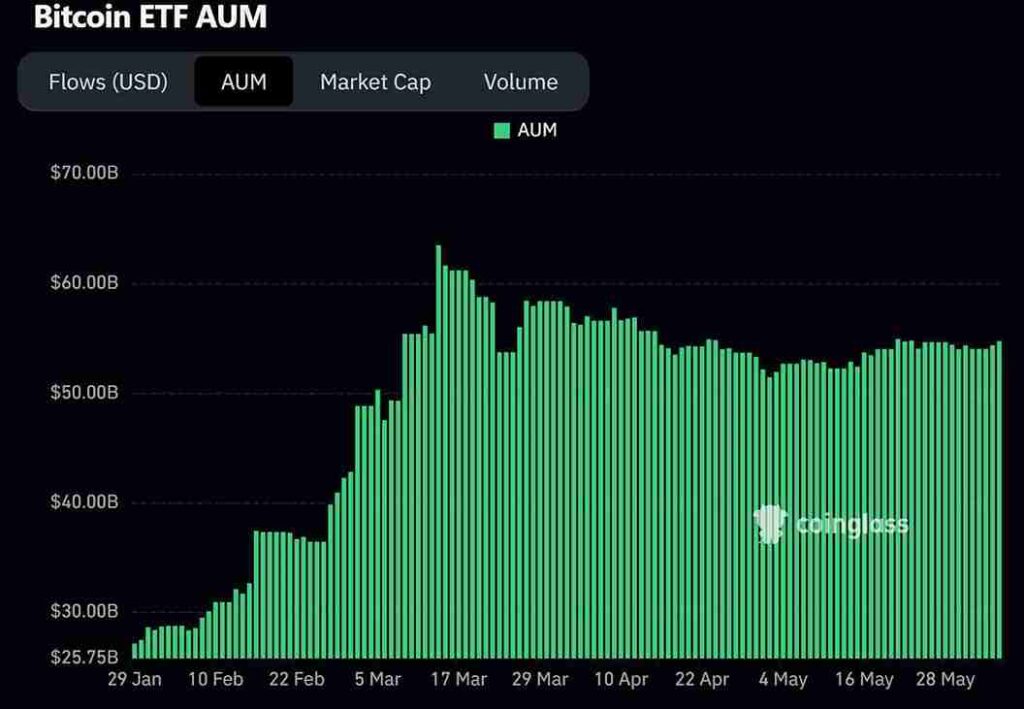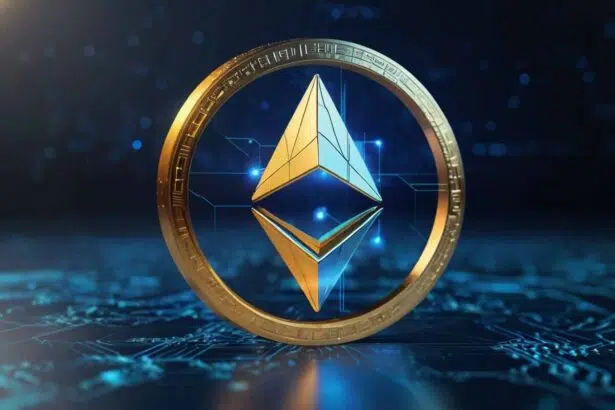The approval of spot Bitcoin and Ethereum ETFs was the result of a lot of efforts, legal battles, and an old ruling by the US Supreme Court. These ETFs not only paved the way for greater benefits for the common investor but also provided much-needed legal backing to crypto. However, this was only possible with the Howey Test, a legal procedure for courts to decide whether a given financial instrument is a security or not.
- What is the Howey Test?
- 4 Rules of The Howey Test
- There Must Be An Investment
- For The Sake of Profits
- In A Common Enterprise
- From The Effort Of Others
- Example Of Cryptos That Are “Securities”
- Example Of Cryptos That Are “Not Securities”
- Why Bitcoin and Ethereum Are Not Securities
- How Did XRP Escape The Fate Of Being A Security
- The Ripple vs SEC Case Timeline
- Analyzing The Judgement by Judge Analisa Torres
- SEC Conceded Defeat, Dropped Charges
- Chain of Events Leading To Approval of ETFs
- Are Other ETFs Incoming?
- Conclusion
- Frequently Asked Questions
This article explores how the Howey Test played a critical role in preventing the SEC’s overreach and therefore, allowing for the approval of the much anticipated Bitcoin and Ethereum ETFs.
At the end of the article, we have also suggested a few potential candidates for more upcoming spot crypto ETFs.
What is the Howey Test?
The Howey Test is a legal process that is followed in the US judicial system to decide whether a financial instrument such as bonds, stocks, crypto, etc., can be termed as security or not.
The classification is essential because it decides if the financial asset will be regulated by the SEC, CFTC, or any other organization within the USA.
For the sake of the article, we will use the standard definition of “security” which says that it is a financial asset where an investment has been made for the sake of profits.
Brief Explanation
The Howey Test lays down a rule as per which a financial asset or instrument can be classified as a security if it satisfies the following four rules.
- There must be an investment in the asset.
- The investment must be from a point of view of profits.
- The profits that are obtained from the investment must arise from a common enterprise, i.e., a company, a trust, an LLC, or any other form of business organization.
- The profits from the organizations must be from the efforts of others, i.e., from the employees and executives of that enterprise.
The SEC vs W.J. Howey Co. Case, 1946
The rule was laid down by the US Supreme Court as a result of the ruling in the SEC vs W.J. Howey Company, 1946. The case originated from the SEC’s attempt to stop W.J. Howey and the company from selling “unregistered securities”.
4 Rules of The Howey Test
There are four basic rules that the Howey Test prescribes, which govern whether a financial asset is a security or not.
There Must Be An Investment
The first rule of the Howey Test states that for a certain financial asset to be termed as a security, it must seek investment from people. These people should not be stakeholders, internal executives, or founders.
The first rule categorically excludes Bitcoin and Ethereum since none of them asked for investments. Rather, these cryptocurrencies sought to make it easy for people to transfer money.
For The Sake of Profits
The investment done in any financial asset must be from the motive of getting some profits. It is assumed that all investments are done from a perspective of direct financial profit. Hostile takeovers, strategic investments, mergers, and acquisitions are too deemed to be investments from this perspective.
The second rule played a crucial role in deciding the fate of general crypto and later Bitcoin and Ethereum ETFs. We have provided a detailed explanation of its application in the later section on XRP.
Did you know Europe had a crypto law much earlier than the USA?
In A Common Enterprise
The investment that is done for the sake of profits must be in a common enterprise. An enterprise means a company, trust, LLC, or any other form of organization that could act as a legal entity.
The implementation of this rule must be done in connection with the FIT – 21 act even though it is not mandated for the following reason.
Even if Bitcoin and Ethereum are considered as single projects, they are too decentralized to be considered a single entity. Neither do their developing entities i.e., Bitcoin’s Core developers and the Ethereum foundation have any control over the token supply.
The proof of the above argument lies in the several hard forks of Bitcoin and Ethereum where due to disagreements there was a split in the blockchains with new projects like Bitcoin Cash, Bitcoin SV, Ethereum Classic, etc., emerging from the hard forks.
From The Effort Of Others
This part of the Howey Test says that the effort that is used to obtain profits must be from the investment of those who are not working in the common enterprise.
For example, if a company is being run by A and B, and they seek an investment, then their sought investment (for profits) can be considered as a security only if they seek investments from C who has neither any direct involvement in the company nor holds any company asset.
Example Of Cryptos That Are “Securities”
Recently, the BlockDAG project was advertised on social media platforms asking its users to invest in it and signaling that the price will increase in later investment rounds.

The transactions under this project can be considered as soliciting investments for the sake of profits.
Example Of Cryptos That Are “Not Securities”
As per the Howey Test’s rules, any cryptocurrency that has not sought investments such as Bitcoin, XRP, Ethereum, Dogecoin, Shiba Inu, and others can be considered as not being a security.
Why Bitcoin and Ethereum Are Not Securities
Bitcoin and Ethereum never wanted people to invest in them for profits. Rather, they wanted to create a medium of transferring money that is based on decentralized technology. This has saved them from being classified as securities.
As a result, when the ETFs came along, they were approved without much hesitancy by the SEC.
How Did XRP Escape The Fate Of Being A Security
XRP had to fight a long legal battle that swallowed upwards of $1 billion in legal fees before it was finally recognized as not being a security. The move was critical in initiating a chain of events that eventually led to the approval of Bitcoin and Ethereum ETFs.
The Ripple vs SEC Case Timeline
Here is a brief timeline of the Ripple vs SEC case which proved to be critical for XRP for being not categorized as a security.
- In 2013, Ripple conducted its ICO where it sold nearly $1.3 billion of XRP.
- On 21st December 2020, the SEC registered a case against Ripple citing unregistered security sales.
- On September 17, 2022, both SEC and XRP filed for a summary judgment purely based on merits.
- By January 2023, multiple organizations and individuals including Coinbase had filed amicus briefs in the court.
- July 13, 2023, the SEC lost the case of programmatic (retail) sales and all the XRP that was sold in retail was free from the SEC-imposed tag of security.
Though the institutional sales part is still under judicial review, yet we expect it to have the same fate as the previous case. This is because the XRP that was sold in retail and the XRP that was sold in the institutional case are both identical.
The worst that might happen seems like Ripple getting fined by the SEC and the case being settled within 2024 – 2025.
Analyzing The Judgement by Judge Analisa Torres
The judgment by Judge Analisa Torres is worth every mention because not only did it set clarity in terms of crypto regulation but also acted as a base for the new US law on crypto named Financial Innovation and Technology for the 21st Century or FIT – 21.
The judge ruled in favor of Ripple Labs stating that the programmatic sales which refers to XRP being sold to retail users do not constitute “security” because there was no component of “solicitation of investment for profits”.
However, she also mentioned that the institutional sales might have been “security sales” since institutions had a motive to buy XRP for profits. A separate court trial was then ordered to hear that part of the case.
SEC Conceded Defeat, Dropped Charges
The SEC, when provided a chance to appeal the matter, did not do so, and later the charges against Ripple executives were dropped.
Chain of Events Leading To Approval of ETFs
The factors mentioned below were critical in deciding whether cryptocurrencies were securities or not.
Ripple vs SEC Case
The case gave clarity to the fact that any programmatic sales of crypto that did not have any return or profit component attached to it were indeed free from the tag of being a security.
The case also provided legal backing to the US spot Bitcoin ETF applications since after the result of this case, BlackRock, the largest asset manager, filed its application which then triggered a Bitcoin ETF race.
US Spot Bitcoin Applications
Several spot Bitcoin ETF applications not only acted to pressure the SEC but they also bent their applications to every requirement posted by the regulator.
Even at the last moment, applicants updated their custody partners even when crypto can be kept in personal custody even by a small retail investor.
In the end, it was the XRP’s case judgment that inspired hope in the eyes of Bitcoin ETF applicants. Then it was a few months of struggle before Bitcoin ETFs were approved. Otherwise, the ETF approval was delayed since 2013 when Gemini was the first Bitcoin ETF applicant.
Do You Know You Can Let Experts Trade For You Via Futures ETFs
FIT-21 Act
The FIT-21 Act provided a clear-cut regulatory framework for governing cryptocurrencies.
In summary, if a security has stated that if a certain crypto project is centralized, it will be regulated by the SEC and its token will be considered as a security. Otherwise, for decentralized cryptocurrencies, the CFTC will act as a regulator.
The qualification for decentralization was that no participant whether institutional or retail should hold more than 20% of the total token supply. If they do, then the project will be classified as centralized.
It was due to this act that Ethereum could not be classified as a security. Otherwise, the SEC had given ample hints and statements that it wishes to regulate ETH as a security and hence be able to stop the Ethereum ETF. The best evidence of this was the SEC Chair’s legal testament in front of the US Congress where Gary Gensler, then SEC Chairman refused to comment on whether Ethereum was a security or not.
Are Other ETFs Incoming?
If we consider that the Howey Test and the FIT-21 decide the criteria for being a security, then we can expect the following ETFs to get filed soon, at least.
- XRP ETFs: This is because XRP is the only cryptocurrency with regulatory clarity other than Bitcoin and Ethereum. XRP was also bought in massive numbers by JP Morgan.
- Solana ETFs: Solana ETFs are expected soon because like other decentralized cryptos, Solana too never solicited any investment citing any return. Even now, its focus lies entirely on building a crypto ecosystem. VanEck has already launched a Solana ETF for markets outside the USA.
- Dogecoin ETFs: Dogecoin has become popular due to its memecoin tag. In 2024, memecoins were in major focus because of the 1313% market growth.
A Brief Overview of Altcoins: What Are Their Types, Pros, and Cons
Conclusion
Bitcoin and Ethereum ETFs have been immensely popular because they allow common people to invest in cryptocurrencies without going through the hassle of safeguarding them. This has caused a massive surge in their assets. In the first three months, the ETFs had gathered strong investments worth half a million BTC.

Want To Safeguard Your Own Security? The Solution Is Airgapped Wallets.
However, these ETFs would not become a reality if the Howey Test didn’t exist to first clear the path for XRP only after which most of the Bitcoin ETFs filed their applications. Further, the FIT-21 Act also takes inspiration from the Howey test and puts great stress on centralization to decide which crypto is a security and which is not.
Frequently Asked Questions
Why do the US Federal Government and the US SEC rely on the Howey Test for crypto?
The Howey Test has been in prolonged use which makes it an easy tool for governments. Otherwise, they make little sense when applied to cryptocurrencies which are a large set of digital assets with varied applications. They can be an asset like gold while at the same time acting as a currency and a utility token for a game.
How is the Howey Test applied?
A good example of how the Howey Test is applied can be seen in the Ripple vs SEC case where the court went through a detailed trial on each rule of the test and checked its applicability in the case of XRP. It is also applied through market regulators like the SEC and CFTC.



















